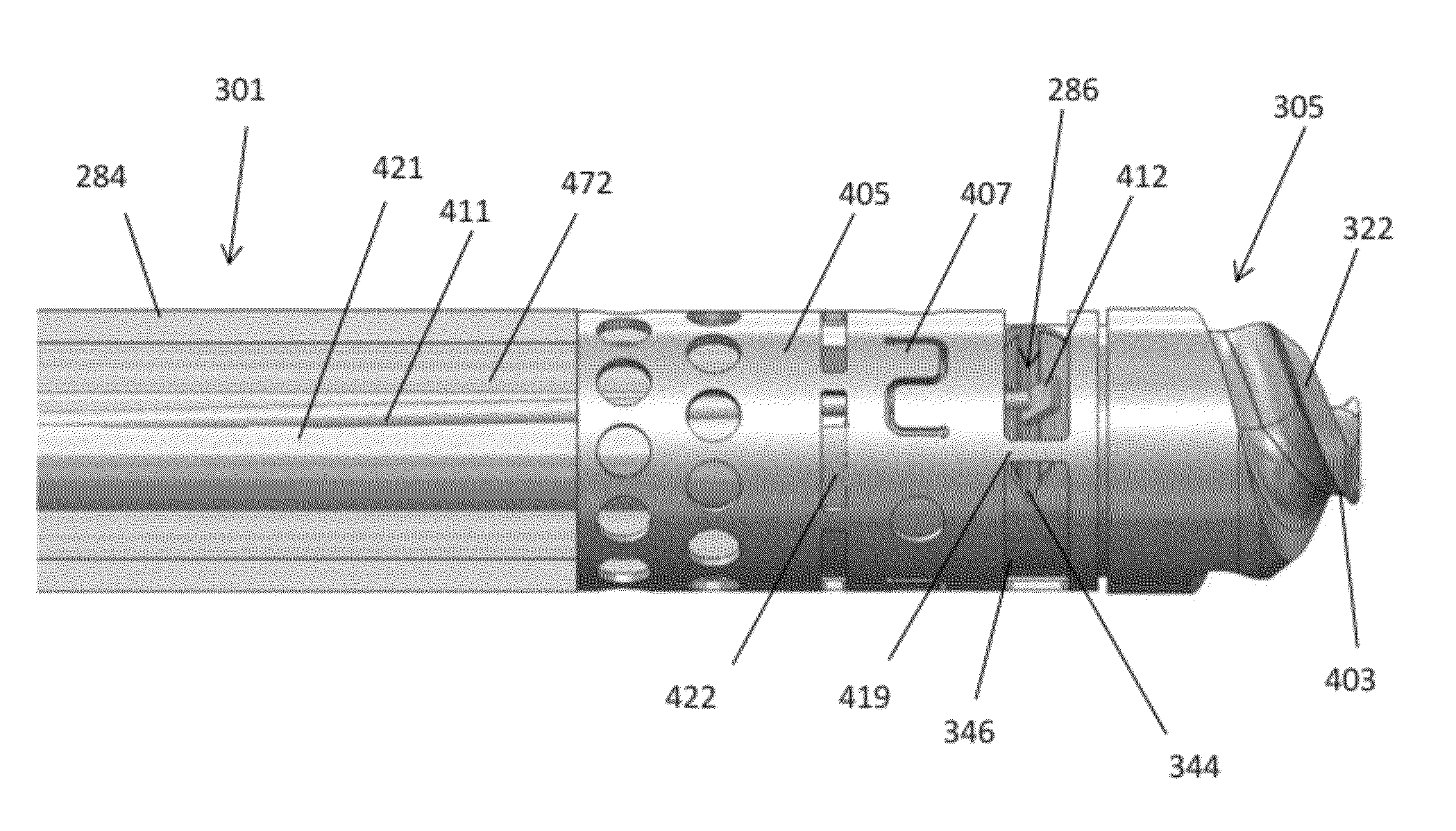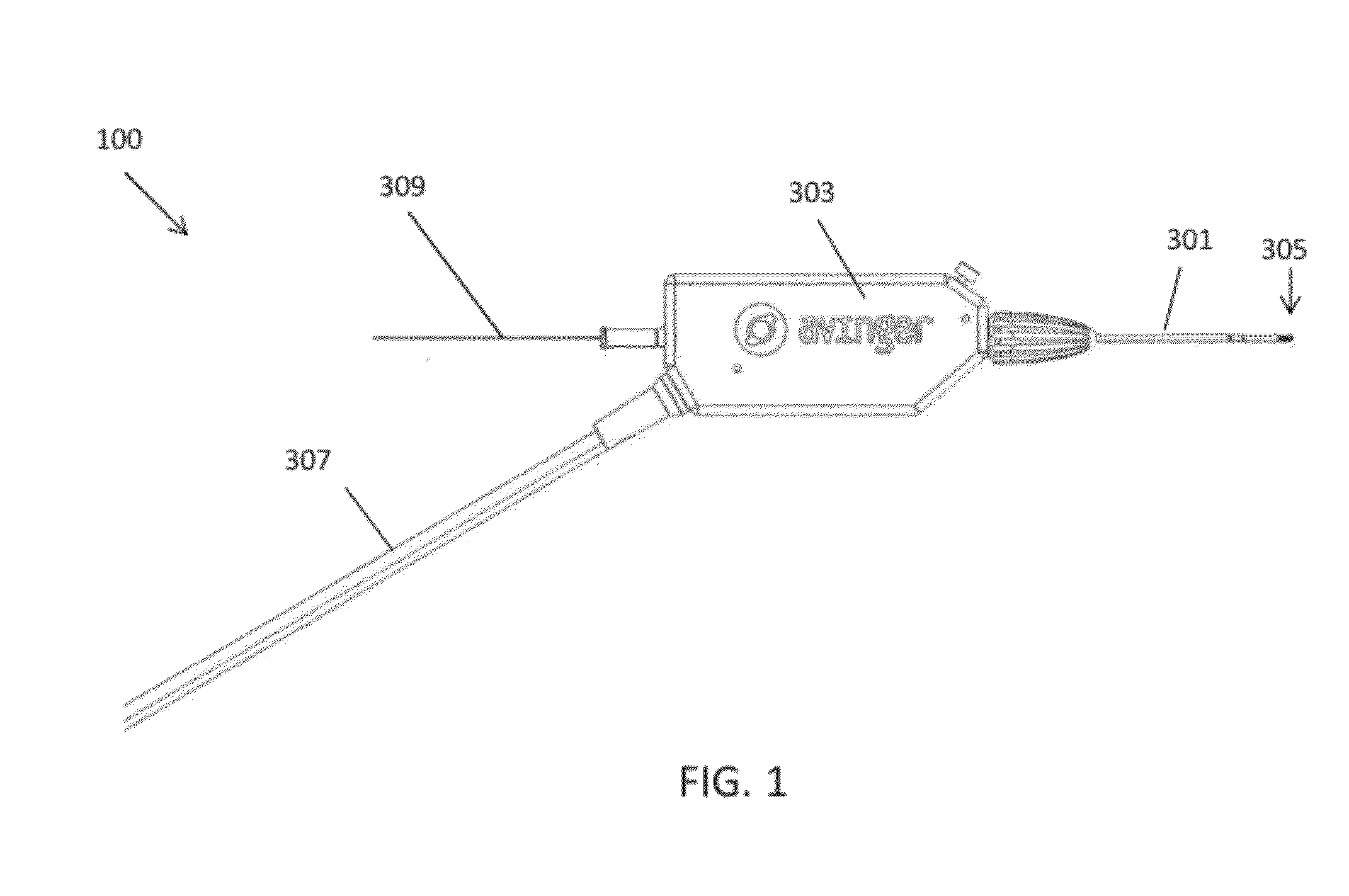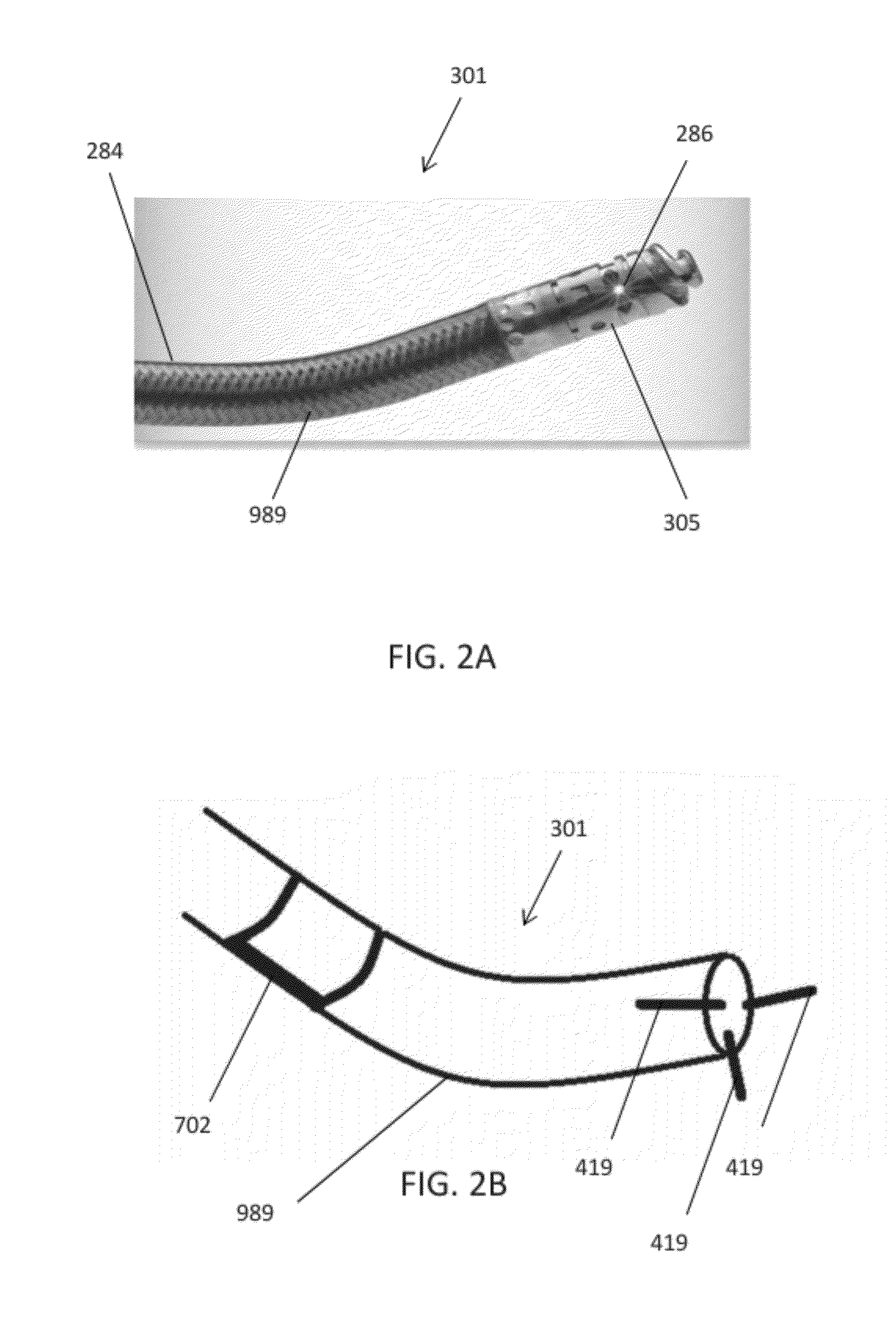Occlusion-crossing devices, imaging, and atherectomy devices
a technology of occlusion crossing and atherectomy, which is applied in the field of catheters, can solve the problems of sharp edges, rough edges, and other dissection, and achieve the effects of enhancing imaging, enhancing catheter flexibility, and facilitating construction
- Summary
- Abstract
- Description
- Claims
- Application Information
AI Technical Summary
Benefits of technology
Problems solved by technology
Method used
Image
Examples
Embodiment Construction
[0075]The catheters described herein typically include one or more imaging sensors at the distal end that may be rotated independently of the elongate body of a catheter. An imaging sensor may include an optical coherence tomography (OCT) sensor. The rotating distal end may also include one or more tissue cutting or dissecting surfaces that may aid the catheter in advancing within occluded regions of a vessel.
[0076]Examples of the types of catheters that are described herein in detail include: (1) guidewire support / placement catheters; (2) support / placement imaging catheters; (3) occlusion crossing catheters (4) occlusion crossing imaging catheters; (5) atherectomy catheters; and (6) atherectomy imaging catheters.
[0077]Two sections are included below. Part I describes catheters, including occlusion crossing catheters, that may be used as guidewire placement and support catheters. In particular, Part I describes catheters configured for imaging from the inside of a vessel, such as an...
PUM
 Login to View More
Login to View More Abstract
Description
Claims
Application Information
 Login to View More
Login to View More - R&D
- Intellectual Property
- Life Sciences
- Materials
- Tech Scout
- Unparalleled Data Quality
- Higher Quality Content
- 60% Fewer Hallucinations
Browse by: Latest US Patents, China's latest patents, Technical Efficacy Thesaurus, Application Domain, Technology Topic, Popular Technical Reports.
© 2025 PatSnap. All rights reserved.Legal|Privacy policy|Modern Slavery Act Transparency Statement|Sitemap|About US| Contact US: help@patsnap.com



